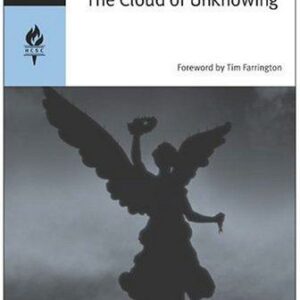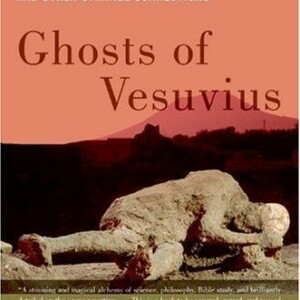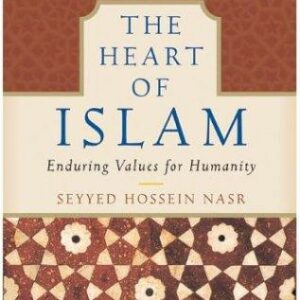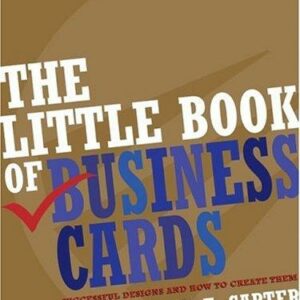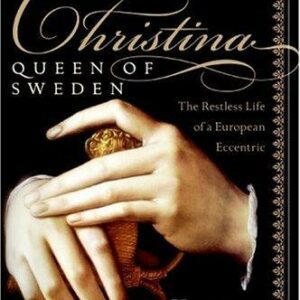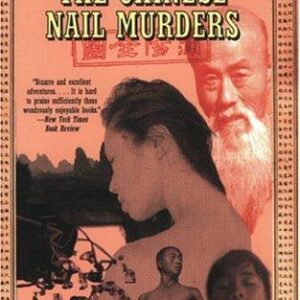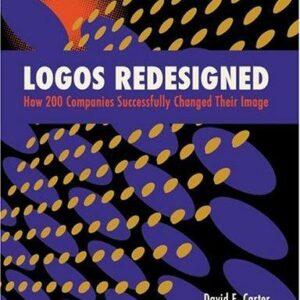Indelible City
$18.00
| Title | Range | Discount |
|---|---|---|
| Trade Discount | 5 + | 25% |
- Description
- Additional information
Description
A NEW YORK TIMES NOTABLE BOOK OF THE YEAR
An award-winning journalist and longtime Hong Konger indelibly captures the place, its people, and the untold history they are claiming, just as it is being erased.
The story of Hong Kong has long been dominated by competing myths: to Britain, a “barren rock” with no appreciable history; to China, a part of Chinese soil from time immemorial, at last returned to the ancestral fold. For decades, Hong Kong’s history was simply not taught, especially to Hong Kongers, obscuring its origins as a place of refuge and rebellion. When protests erupted in 2019 and were met with escalating suppression from Beijing, Louisa Lim—raised in Hong Kong as a half-Chinese, half-English child, and now a reporter who has covered the region for nearly two decades—realized that she was uniquely positioned to unearth the city’s untold stories.
Lim’s deeply researched and personal account casts startling new light on key moments: the British takeover in 1842, the negotiations over the 1997 return to China, and the future Beijing seeks to impose. Indelible City features guerrilla calligraphers, amateur historians and archaeologists, and others who, like Lim, aim to put Hong Kongers at the center of their own story. Wending through it all is the King of Kowloon, whose iconic street art both embodied and inspired the identity of Hong Kong—a site of disappearance and reappearance, power and powerlessness, loss and reclamation.Praise for Indelible City:
“The engine for this vivid, loving book is Lim’s insistent questioning — her recognition that whatever comes next for Hong Kong will require not only fortitude but also willful acts of imagination.” –The New York Times
“Bring[s] to light the remarkable resilience of Hong Kongers . . . . [and] shows the vibrancy, volatility, attempted erasure, and resistance of the people.” –Shondaland
“Powerful.” –The Economist
“Dismantles the received wisdom about Hong Kong’s history and replaces it with an engaging, exhaustively researched account of its long struggle for sovereignty.” –The New York Times Book Review
“Arriving at the exact right moment, Indelible City charts the course of the region by digging deeply into its history. Lim deftly weaves her way through the ages, arriving at our current time, all the while capturing Hong Kong’s soul inside the book’s pages.” –Newsweek
“Cleverly uses the story of a slightly mad calligrapher, Tsang Tsou-choi, to discuss Hong Kong’s erased history. . . . Lim’s book is touched by a sense of loss, even while she hopes for Hong Kong’s renewal in the future.” –New York Review of Books
“A great book. . . hits [the] sweet spots. . . history, myth, activism, and what it means to call a place home. . . . Lim’s work feels particularly relevant now.” –WNYC, On the Media
“Beautiful and timely. . . . [Louisa Lim] fills a gap that has long been missing in books about Hong Kong: an account of the city’s long history of defiance, told from the perspective of Hong Kongers themselves.” –Commonweal Magazine
“Lim takes her reader on an intimate and dream-like wend through the streets of Hong Kong, revealing layers of the bracing, complex, and palimpsestic city. . . . Weaving together multiple histories and narratives, those real and fictive, sanctioned and preserved, erased and newly discovered, Lim pushes back against the authoritative, state-imposed narrative.” –LitHub
“Lim uses reporting and memoir to sketch a vivid portrait of her native Hong Kong’s past and present. . . . [and] uncovers the inspiring, complicated, and rebellious history of her city and its citizens.” –The Millions
“Riveting. . . . a vivid and vital contribution to postcolonial history.” –Publishers Weekly, starred review
“Beautifully written… A fascinating work that is essential reading for anyone with an interest in Hong Kong.” –Library Journal, starred review
“Lim’s outstanding history of Hong Kong is an epic must-read. . . . From the first page, the importance of language and the voices of Hong Kongers are central themes. Yet Indelible City captures much more as it records the struggle of people oppressed. . . yet determined in their pursuit of freedom and cultural identity.” –Booklist, starred review
“The best book about the indelible city to date. Irresistibly real and emotionally authentic, it shines with a shimmering light rarely seen in political narrative. A truly extraordinary elegy.” –Ai Weiwei
“An utterly brilliant and original ode to Hong Kong, throbbing with eccentricity and sense of place. Like Joseph Mitchell’s singular rendering of New York, Lim’s Hong Kong will be read decades from now as an indelible portrait.” –Evan Osnos, author of Age of Ambition, winner of the National Book Award
“I absolutely loved this book. Each page is a revelation about a city whose history I thought I knew well. Lim’s exploration of Hong Kong’s identity is insightful, refreshing and entirely original.” –Barbara Demick, author of Nothing to Envy and Eat the Buddha
“I read Louisa Lim’s book slowly, haunted by memories and stymied by sorrow. An archaeological dig into the disappearing present, her fascinating and heartbreaking account reveals an indelible history hidden in plain sight, and a future that Hong Kong’s unique sensibility promises even as the world’s most powerful autocracy strives to erase it.” –Geremie Barmé, editor of China Heritage
Louisa Lim is the author of The People’s Republic of Amnesia: Tiananmen Revisited, which was shortlisted for the Orwell Prize and the Helen Bernstein Book Award for Excellence in Journalism. She covered China and Hong Kong for more than two decades as a correspondent for the BBC and NPR, and has also written for The New York Times, The Washington Post, and The Guardian. Raised in Hong Kong, she lives in Australia with her two children and teaches at the University of Melbourne.
Chapter 1
Words
It was during Hong Kong’s steamy, explosive summer of 2019 that walls became weapons. Millions of people marched through the streets to protest against the extradition law they feared would mark the end of the territory’s way of life. Armed with Sharpies and Post-it Notes, they feathered the walls with sorbet-colored declarations in black Chinese characters: We love Hong Kong! We are Hong Kong! Hong Kong never give up! These were not only walls of discontent but also walls of community; over and over, the messages asserted a distinct Hong Kong identity, separate from China.
Soon the notes were proliferating across overhead walkways and through underground tunnels, on shop windows and street signs, railings and billboards, like a swarm released into the wild, to pollinate and colonize the city. They evolved into pavement mosaics made up of scores of A4 photocopies glued end to end across the sidewalk near the government headquarters. Pedestrian walkways and underpasses quickly became impromptu galleries of dissent, with anonymous heartfelt pleas jostling for space. Often they were strategically placed. A black-and-white carpet of pictures of Chinese president Xi Jinping forced commuters to stomp on his face. Black-clad teams were deployed to paper footpaths at jogging speed, for kilometers at a time. Their assembly-line efficiency was mesmerizing to behold: an advance crew ran ahead, spraying glue, followed by a second string who threw down posters in a checkerboard pattern, black backgrounds alternating with white as they cantered past, and bringing up the rear, a final crew who used long umbrellas to tamp the posters down onto the glue as they ran. Go, Hong Kong! Some people move on, BUT NOT US. Soon the black-clad protestors had graduated to graffiti slogans spray-painted straight onto roads, highway dividers, and tram shelters. Fuck the police. Chinazi. If we burn, you fucking burn with us. Public surfaces became anonymous repositories for people’s deepest and most dangerous sentiments.
The protests sprang out of the massive opposition to proposed changes to Hong Kong’s extradition laws that would permit the rendition of alleged criminal suspects to China. This would put anyone, no matter their nationality, in danger of having to stand trial under a Communist Party-led legal system rife with abuse and with no presumption of innocence. The new extradition legislation would forcefully undermine the most basic tenets of Hong Kong’s cherished status quo. It would endanger the city’s judicial independence, its rule of law, and its status as a political refuge, the very things to which Hong Kong attributed its success. The British had not endowed their subjects with full citizenship, the right of abode in Britain, or universal suffrage, but they had inculcated them with civic values, including an almost religious respect for freedom, democracy, and human rights. And Hong Kongers were not going down without a fight.
I was transfixed by this movement building in front of my eyes, and especially by the explosion of subversive Chinese characters running riot across public space, repurposing the city into an evolving, open-air gallery of populist ideas. These displays were called Lennon Walls, after a wall in Prague that had been painted with countercultural, anti-establishment graffiti beginning in the 1980s, shortly after John Lennon’s death. Hong Kong’s original Lennon Wall had been established in 2014, during the pro-democracy protests of the Umbrella Movement, when people began sticking Post-it Notes on a circular concrete staircase near the government headquarters. I’d visited that wall daily, and I started doing the same this time. But it wasn’t long before the Post-it Notes had leaped off the walls to become Lennon Paths, Lennon Footbridges, and Lennon Pavements, and I could no longer keep up.
In China, the history of the written word dates back some 3,700 years. Some scholars even argue that Chinese script preceded the spoken language. The first instances were pictographs known as jiaguwen, or “oracle bone” inscriptions carved with a sharp instrument on tortoise shells or the shoulder blades of oxen, dating to the Shang dynasty, sixteen centuries BCE. The inscriptions concerned all sorts of matters of state-questions about when to plant crops or which days might be auspicious to hold ceremonies or to launch wars. The bones were heated until they cracked, and oracles would divine the answers from the pattern of the cracks. So, from the moment of its inception, the written Chinese word was rooted in political and spiritual authority. Indeed, the original ideogram used for “written character” zi is composed of two elements, “child” in a “building,” which together literally mean “new baby in the house.” Thus the original meaning of was “to birth” or “to deliver” or “to bring into the world,” but that changed over time into “to raise,” “to love,” “to educate,” “to govern,” and “to administer.” To borrow from the late, great sinologist Simon Leys, in the Chinese beginning, there was the word, and the word was word.
In traditional Chinese culture, calligraphy is both the apogee of all art forms and a tool of power. Whereas public squares in Europe are filled with statues of famous people, similar spaces in China contain stelas, or stone slabs, engraved with calligraphy. This holds true in Communist China, too, where the unorthodox rightward-slanting characters of Chairman Mao Zedong still adorn newspaper mastheads and building signs. China’s current president, Xi Jinping, has adopted a Mao-style signature, as if appropriating Mao’s penmanship might also arrogate some of the Master Calligrapher-Poet’s powers. The quality of emperors’ brushwork showcased their erudition, aesthetic sensibilities, and poetic capabilities, while giving hints of their leadership style. The appreciation of calligraphy is an art form in itself, since true aficionados do not simply read the text but rather mentally replay the brush’s fleeting dance across the page in an act that Leys described as “an imaginative communion with the dynamics of the brushwork.”
But the King of Kowloon flew in the face of that tradition, with brushstrokes that screamed his illiteracy. They were everywhere in Hong Kong’s public space when I was growing up-they spidered down lampposts and across walls, along curbs and flyovers, flickered at the edge of your vision as you hurtled past in a minibus. The King himself was a fixture of the landscape as well. Hopping on his crutches, with plastic bags swinging from the handles, his crab-like, bow-legged silhouette was so distinctive that, if people saw him in the distance, they would cross the road to avoid him. As he passed, parents would shield their kids’ eyes from him and mutter, “Chi-sin a! Crazy!” He even became a playground taunt-“You’re the King of Kowloon!” was leveled at the slow kids, the weird ones, the poor ones, the outcasts.
The details of Tsang’s life are sketchy in the extreme, but it is known that he was born in Guangdong province, in Liantang village in Zhaoqing prefecture. He began school at the age of nine and dropped out two years later. At the age of sixteen, he crossed the border to Hong Kong and worked as a vegetable farmer near Choi Hung and Lion Rock. He was later employed as a laborer at a building-materials company, and then at a trash collection station. In 1956, he married Man Fuk-choi, who had been brought up in San Tin village in the New Territories, home to the Man clan that had settled Hong Kong in the Song dynasty. The couple had eight children, three of whom died in infancy.
No matter how much I asked, no one was able to give me a definitive version of the King’s moment of epiphany. Some people said he had gone back to his ancestral village to add his wife’s name to family records, and while he was there he had uncovered ancestral documents showing that the Kowloon peninsula had originally belonged to his clan and had been confiscated without compensation after the act of cession. But no one I spoke to had seen these documents. In fact, none had even been to his village. One of his self-appointed regents had attempted the journey but had failed to determine which was the correct Liantang village, among a number in the area.
Another story I heard was that Tsang had been hit by a car around the mid-1950s as he was walking past the Three Mountain Kings Temple in Ngau Chi Wan. When he opened his eyes after the accident, the first sight that flickered into his vision were the words 國 “country” and王 “king” emblazoned across the lantern outside the temple in thick square strokes. Those two characters became the anchors for the King’s slabs of text, looming over all the others. Together in Chinese, they read,國王 “King of the Country,” though he sometimes wrote國皇 “Emperor of the Country.” He became known as the King of Kowloon in English, but in Chinese he was always the “Kowloon Emperor.”
The King began writing in public around 1956, and he was initially viewed as a crank and a vandal. In the 1960s, he was said to have smashed the window of a post office with a rock, after which he was sent to the psychiatric ward of the notorious Castle Peak Hospital for eighteen months. On his release, he continued his graffiti campaign, daubing his anger across government property in thick black slashes. His sanity may have been in question, but his methods were highly contextual. “Emperors in China,” he said, “have always been calligraphers.” In 1970, he first appears in a local newspaper, which mentions his “imperial decrees” across public space. It describes him as living in a small wooden shack on a hillside, which he called his “palace.” Outside was a wooden noticeboard inscribed with four characters: 國泰民安 “The country is prosperous and its people live in safety.” At some point in the 1980s, he had a work accident, possibly when a trash bin crushed his legs, leaving him on crutches.
The die had been cast. Others may have seen him as a disabled, mentally unstable old man who stank to high heaven. But in his mind, he was an emperor, and he lived this reality. Sometimes he even called himself the Emperor of China and England for good measure. He saw everyone else as his subjects, a sentiment to which he sometimes gave voice: “As a King, I can’t be in touch with you ordinary people.”
Simon Go Man-ching, a photojournalist who became fascinated by the distinctive graffiti he saw appearing everywhere in Hong Kong in the early 1990s, when he was a student at the Polytechnic University, began keeping a record of Tsang’s public writings. When a rumor circulated that the King had died, Go spent two days on his trail, tracking him like an urban hunter. Eventually he found the King’s address-“living in Tsui Ping estate”-graffitied on a wall. That was how he located Tsang Tsou-choi in his flat on the eighteenth story of a public housing estate in Kwun Tong, an industrial and working-class part of Kowloon facing Hong Kong Island’s northern shore.
After that, Go became the first of those self-appointed regents looking in on the King every few weeks, bringing him painting supplies, lunch boxes of roast meat, and cans of Coke. Tsang’s own family did not live with him. Some said his wife brought him food every day, but by Tsang’s own account, his family had disowned him. “My wife visited me and said I was crazy. She said damaging the post office was a serious crime,” he told a film crew. “They said I’d drag them down with me. They said I’d die in prison.”
Go saw him as a lonely old man and would humor his wishes, even addressing him as “King.” Once when he forgot to bring ink and brushes, Go apologized and jokingly asked whether, as a loyal subject, he should execute himself to atone for his error. The King answered straight-faced, “No need. It’s okay.” Another fan, photographer Birdy Chu, recalled a taxi ride they took together. As they discussed where to disembark without illegally stopping on any yellow lines, the King regally announced, “I’m the King. I’m the King. I can just be dropped off anywhere.” To the King, the normal rules did not apply. To Go, the legitimacy of the King’s claims on the land was irrelevant. “I think it’s a personal story or history,” he said. “To him, it’s really important but to me it doesn’t mean anything.”
The family did not welcome outside attention. Go had once been warned by one of the sons to leave King’s apartment immediately or he’d call the police. The curator Lau Kin-wai, who took over as de facto regent, also recalled a son answering the door to his knock by saying, “Go away! He’s dead.” But while the family could limit contact, they could not stem the King’s flood of words even though they were so mortified by his work that they refused to countenance it, and reportedly never received any money from it. They could not stop him from incorporating them in his work, either. The King referred to his wife, Man Fuk-choi, as “the Empress,” and he painstakingly wrote out the names of his sons, the dauphins. When his daughters moved overseas-one to the United Kingdom, one to the Netherlands-he sometimes mentioned they were having tea with the Queen of England or the Queen of the Netherlands. Very occasionally he used random English words such as “reach” or “snowman” in his work.
Just before Hong Kong’s return to China in 1997, Tsang Tsou-choi had an art exhibition. It was a sensation, a circus, a spectacle, a travesty. The art establishment was scandalized and not a single work sold. The very next day he was out again on the streets, marking his dominion as he always had done.
Over time, the commercial success that had initially eluded his work found him. In 2003, he became the first Hong Konger to represent the territory at the prestigious Venice Biennale. He made cameos in local movies, there were songs sung about him, poems written to him, and his stinky calligraphy-covered T-shirt appeared in the rarefied auction rooms of Sotheby’s. His cramped, crooked calligraphy had crawled off the streets onto bedsheets and underpants and tote bags, eventually adorning whisky bottles, T-shirts, Starbucks walls, and sneakers as a commodity in its own right. But the King was always clear about his role. In one of his rare interviews, in 2005, he said, “They should just give me back my throne. I am not an artist-I am simply the King.”
His screeds were love letters to both the land and the family that he had lost. Despite their opposition, he went on writing in the streets until 2004. That was the year that he accidentally started a fire in his own apartment, and was sent to live in an old people’s home for his safety.
US
Additional information
| Weight | 8.6 oz |
|---|---|
| Dimensions | 0.8400 × 5.1700 × 7.9400 in |
| Imprint | |
| ISBN-13 | |
| Author | |
| Audience | |
| BISAC | |
| Subjects | gifts for history buffs, POL054000, chinese history, Civil disobedience, political books, political science books, history of china, political philosophy, world politics, geopolitics, historical books, history teacher gifts, best books, best books 2022, POL035010, hong kong history, chinese communist party, best book list 2022, political science, china, politics, civil rights movement, social justice, Chinese, justice, asian, human rights, history, hong kong, asia, injustice, civil rights, democracy, history books, world history, government |
| Format |


